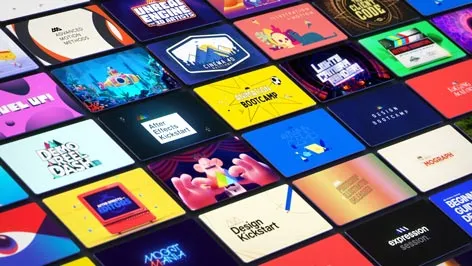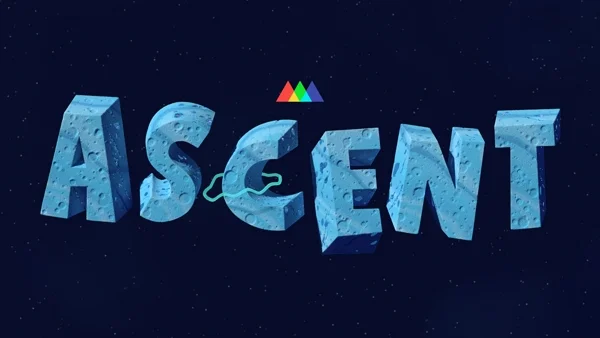Unpacking the stunning spot Italy-based Taxfreefilm created for Omega watches.
Omega watches have been ticking right along through many iconic moments in human history, and Franco Tassi, an award-winning art director and designer from Italy, recently collaborated with Omega on a captivating animation showcasing some of those moments in the watchmaker’s legendary history.

We talked with Tassi, founder of Taxfreefilm, and Giovanni Grauso, who directed and designed the Omega spot, about how they used Cinema 4D and ZBrush to create the stunning animation that, in just one minute and thirty seconds, transports viewers from the ocean to a lunar landing, the Olympics and beyond.
Tell us about yourself and Taxfreefilm.
Tassi: I started my career as graphic designer and art director. I worked at advertising agencies in Milan and created TV and print campaigns, including some award-winning projects for the Swatch Brand.
After a few years, we decided to move back to my wife’s little hometown, Parma, where I started over as a freelance digital director. The motion graphics world was being born then and I had a lot to learn. YouTube tutorials were not around yet, so I spent lots of nights experimenting and learning, trying to create something that made sense.

I have always been a Mac user, so I didn’t have many options for 3D software. I tried Strata Studio Pro, but it had many limitations. Fortunately, Lightwave and Cinema 4D had just been ported from Amiga to PCs and Macs. I chose C4D for its ease of use since I’ve never been a technical guy.
I landed a motion graphics TV spot for Volvo and did it all on my own, but I knew I had to hire people from then on. I founded Taxfreefilm in 2005 with a group of very skilled artists. The name was suggested by a friend of mine as a play on my name, Tassi Franco.

How did this project with Omega come about?
Tassi: This was our studio’s second project with Omega. We got the first project because someone remembered my work on a 1997 Swatch campaign and asked us to pitch. Omega is part of the Swatch Group, and we won that pitch with a bit of reckless ingenuity. This time, they came back looking for another “big thing” in the spirit of the older project.
How did you navigate Omega’s history and decide which elements to feature?
Tassi: The core values of Omega are written in history from deep sea diving records to winning the America’s Cup sailing race. Omega has also been the official timekeeper of the Olympic since 1910, and they made the only watch that has been to the Moon.

In addition to their storied history, we wanted to honor the magic of Swiss mechanical watchmaking. Omega creates micro-mechanical jewels equipped with perpetual motion, which is an unbelievable accomplishment.

Giovanni, could you describe your creative approach as designer and director?
Grauso: Working primarily in Cinema 4D, as well as ZBrush, Substance Painter and Arnold, the team was asked to go beyond their technical specialties and participate on a broad level. Everyone was involved in the creative process, which really enriches the creative and decision-making process in ways that are only possible in a small studio setting.
We have a five-person team of 3D generalists that contributed to multiple aspects of the project, from design to production dailies. The original Omega project was a human-scale world built from mechanisms depicting a mechanical skin spread over the landscape. Beyond the gears, everything was human-scaled.
For this project we inverted the idea, thinking of it as a world existing at watch scale, a carillon that narrates the world, so tiny it could exist within a watch box. We tried to think like watchmakers building a real carillon, respecting the limitations that would exist at such a small scale.
All the separate elements of the world are joined together within a common rotational system. The watch movement was our inspiration for building the world. That approach actually helped us design the characters and the related movements because of the forced system and inherent limitations of the small scale.

Our goal was to have the characters and objects feel like they were really made by hand, necessitating a design process built on the question: How would a real watchmaker create this?
The James Bond sequence was great. Talk about that.
Grauso: We thought about Bond’s iconic legacy and knew that the London cityscape and landmarks and the Aston Martin car were instantly recognizable and needed to be featured.

We also wanted to bring in other touches of familiar Bond details and decided to create a visual transformation with a black iris opening that would remind the viewer of the classic title sequence traveling down the gun barrel towards the opening iris graphic.
What kind of response did you get to this project?
Tassi: Well, the best possible response has been the hundreds of comments viewers have made on the official Omega YouTube channel. They all sound more or less like this: ‘If all commercials were this good, I would still be listening to AM/FM radio and I would not have ad block on my computer.’
Has your unique style attracted the attention of new clients?
Tassi: Yes, it has. We have had requests from Switzerland, but also from the U.S. and Hong Kong. Right now, we’re working on an upcoming campaign for the Lacoste 12.12 watch collection
Michael Maher is a writer/filmmaker in Dallas, Texas.







